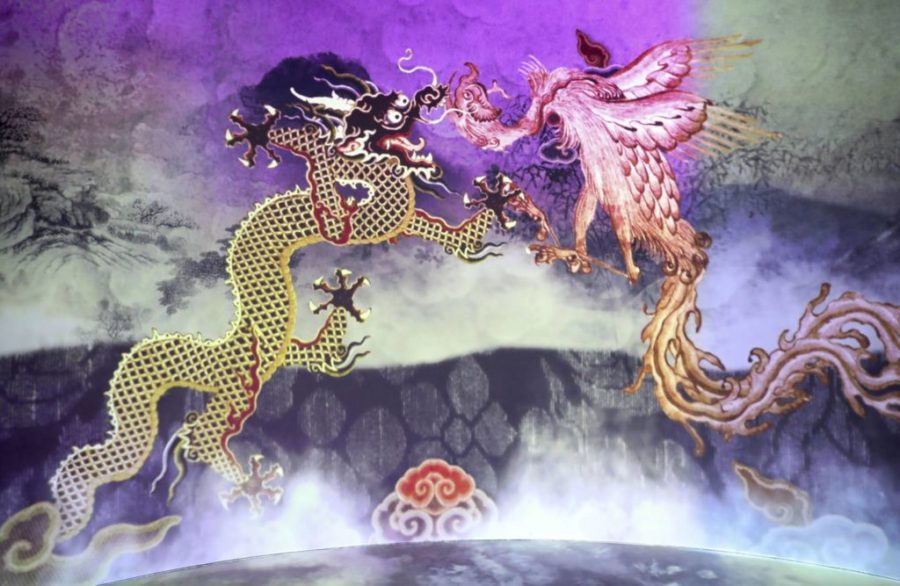
Hundreds of years of cultural exchange between China and the Islamic world
Cultural exchange between China and the Islamic world has been going on for centuries. The Great Silk Road facilitated the exchange of not only goods, but also religions and ideas.
The network of sea and land routes, which became known as the Silk Roads, was established around 130 BC. BC, when the Han dynasty in China opened trade with the West. The Silk Road became the basis for the subsequent flourishing of cultural exchange between the Islamic world and China.
:quality(70)/cloudfront-eu-central-1.images.arcpublishing.com/thenational/XRXGUWLXFFF3POEQVUGXLTSCPE.jpg)
The exhibition features over 200 artifacts / Source: Hushnum Bandari / The National
The era of peaceful relations between them began in the 8th century. with the establishment of the Abbasid caliphate. Cultural influences can be traced, in particular, using the example of ceramics. If earlier Islamic potters produced mainly simple dishes, then meeting with excellent Chinese products taught them that ceramics can serve not only purely utilitarian purposes, but also be a luxury item. In ceramics from Chinaat this time, intricate patterns of cobalt blue pigment appear, which was used in ancient Egypt, but was also popular in the Abbasid era. Chinese artisans are starting to create products specifically for the Islamic world. According to one version, porcelain with blue and white decor, which appears during this period, was developed specifically for the Middle East market, since it was considered too vulgar by Chinese criteria. A large number of porcelain items from the 8th-14th centuries found in Islamic countries confirm this point of view.
:quality(70)/cloudfront-eu-central-1.images.arcpublishing.com/thenational/S2AQN6TRENFWBCV43III3ATG44.jpg)
Intricate cobalt blue pottery / Source: Hushnum Bandari / The National
The period of the XI-XIII centuries was marked by the fact that, due to the Mongol invasion, land routes became dangerous, therefore, mainly sea trade between East Asia and the Islamic world developed, covering the region from Guangzhou to Basra . The middle of the 13th century was marked by one of the bloodiest chapters in the region’s medieval history: the conquest of Baghdad by the Mongols in 1258. It was a fatal blow to the Abbasid caliphate. However, the Pax mongolica (Mongolian world) that arose after this, when the Mongol dynasties ruled China and part of the Islamic East, contributed to the unprecedented development of trade and artistic exchange in these territories.
:quality(70)/cloudfront-eu-central-1.images.arcpublishing.com/thenational/ENVKJNX2T5HSPFX73GN6WU4XXE.jpg)
The Dragon and Phoenix exhibition embodies two cultures – China as a dragon and the Islamic world as a phoenix / Source: Khushnum Bandari / The National
Commercial contacts between China and the Islamic world intensified in the 15th century, when the Ming dynasty consolidated its dominance over East Asia. In the subsequent period, the use of sea routes increased. Chinese influence on the art of the Islamic East manifested itself in the depiction of fantastic animals. A typical example of this was the chimerical fire animal known as the qilin.
:quality(70)/cloudfront-eu-central-1.images.arcpublishing.com/thenational/I57OISCTC5A4LLCPPLSRZU6ERE.jpg)
Burial Figures from North China / Source: Hushnum Bandari / The National
In turn, as trade between China and the Ottoman Empire increased, Muslim artists were inspired by Chinese ceramics and textiles, using their own artistic methods and materials.
:quality(70)/cloudfront-eu-central-1.images.arcpublishing.com/thenational/GT4OQPDQFNANJBXMT2SVGWU4R4.jpg)
Scroll with verses written in Chinese characters by the Persian poet Hafiz / Source: Khushnum Bandari / The National
The connection between Chinese and Arabic calligraphy deserves special mention. The exhibition “Dragon and Phoenix” in the Louvre Abu Dhabi shows a dating from the 17th century. a scroll with verses by the Persian poet Hafiz, which were written in Chinese characters; and the 17th century Koran, written by an anonymous Chinese scribe. It can be argued that the art of writing is what unites both civilizations. Calligraphy as an art almost completely disappeared in the West after the spread of printing technologies, but it persists both in China and in the Islamic world.
:quality(70)/cloudfront-eu-central-1.images.arcpublishing.com/thenational/PXIFCHVSSJECRA25ZNH5W5ODTQ.jpg)
17th century Quran by an anonymous Chinese scribe / Source: Hushnum Bandari / The National
In the XVIII century. the expansion of European cultural and economic influence led to the fact that Western intermediaries began to occupy an increasingly important position on regional trade routes, even between the Chinese and Islamic worlds, and Western industrial goods began to spread more and more. All this led to a weakening of cultural ties between the two civilizations.
:quality(70)/cloudfront-eu-central-1.images.arcpublishing.com/thenational/4IO6KLPSQBBMBLCEL3UVFISQCM.jpg)
On the right is a golden cup with a dragon-shaped handle from Yuan Dynasty China (1279-1368). On the left is a larger black jade cup / Source: Khushnum Bandari / The National
Islamosphere

